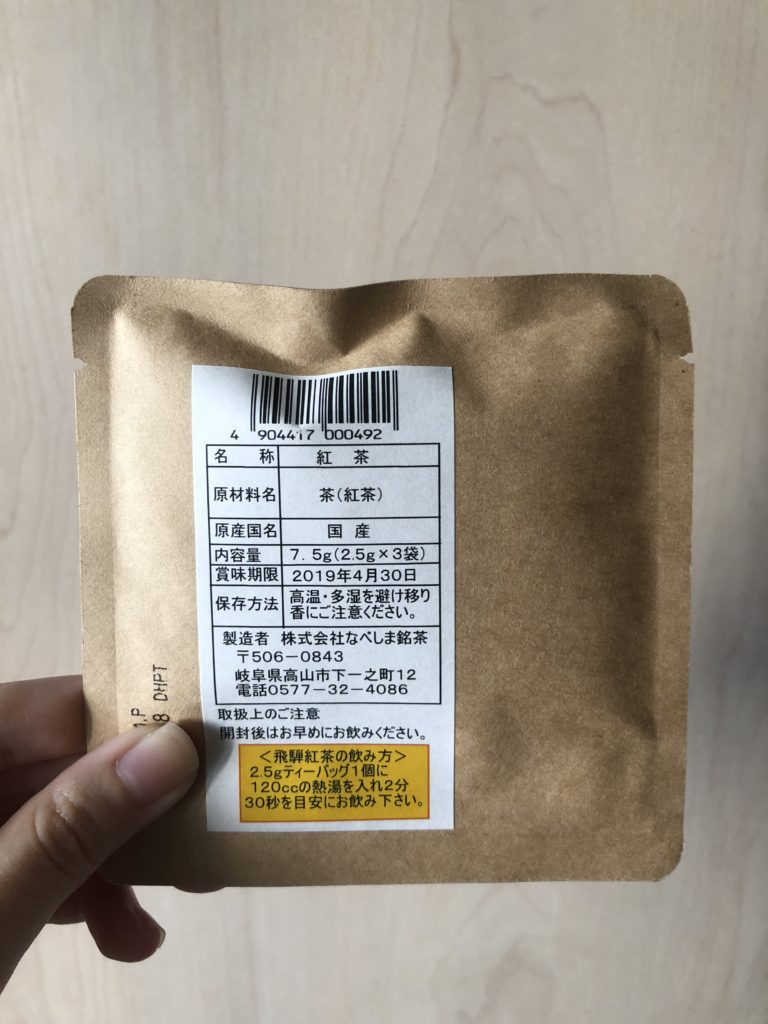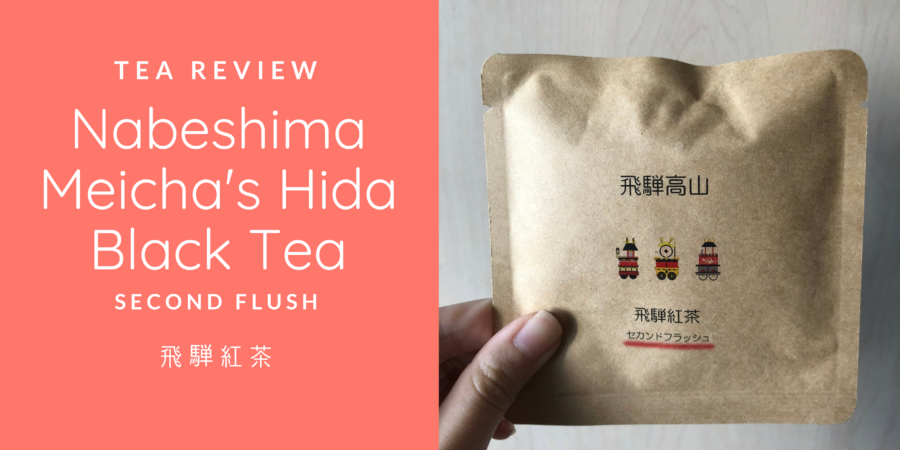I’m not sure how I got this, but as I was going through my tea cabinet, I found a packet of black tea from Nabeshima Meicha (なべしま銘茶). Since the only other Japanese black tea I’ve tried is Ureshino black tea, I was pretty excited to try this!
About 飛騨紅茶 (Hida Black Tea)

Since the back of the packet didn’t have much information, I took what information I could find (the tea maker) and went googling!
Turns out that Nabeshima Meicha (the company that makes this) is a pretty old one, with a history going back to 1908 [1]. The name of the tea, Hida, comes from Hida Takayama, a city in Gifu. The cultivar is べにふうき (紅富貴; benifuuki), which is a cultivar similar to the assamica tea plants, making it very suitable for black and oolongs/partially oxidised teas [2]
One great thing about Japanese black teas is that they are all unique. This is because Japan isn’t famous for its black teas, so tea makers producing black tea have to come up with their own take on how to oxidise the tea leaf. In the case of Hida black tea, the tea leaf is oxidised with the help of an onsen! [3] This is actually the first time that I’ve heard of such a unique method.
Clearly, this affects the taste of the tea because another article I read goes into more detail about the difference between the first and second flush for Hida Black teas[4]. The first flush tea is said to be very drinkable [5], with the astringency of a back tea and a great fragrance. The second flush, on the other hand, has a more subdued aroma, with slightly higher astringency and a bitter note at the end. I wish I had both teas on hand, but alas, I only had three teabags of the second flush.
Tasting Notes
I actually took notes for all three cups of tea, and I think it’s clear that the way you make it plays a big difference. The recommended brewing method is to brew one tea bag in 120ml of water for 2.5 minutes
The first tea I made was a lighter one, probably less than a minute: This was on the sweet side, with little bitterness or astringency. In fact, it reminded me of a Chinese black tea. I let my dad try it, and his comment was: 口感满(pretty good mouthfeel).
The second time I made this, I followed the recommended brewing time and it changed to something quite like a normal Assam black tea but with a bitter and slightly pronounced astringent aftertaste. Not really my thing, although I know that the tea is supposed to taste like this (well, I didn’t know it when I drank it, but I knew I didn’t quite like the bitterness!)
The third time I made the tea, I used a brewing time that was somewhere between round one and round two and it hit the sweet spot. The tea had a slightly more robust taste than the first round, still on the sweet side, but without the bitterness that I tasted in the second round. Well, I wrote “without the bitterness” but that’s not quite true; it’s got a little bit of bitterness, but now, the bitterness adds depth to the tea. I liked this a lot and wished I had more.
It’s too bad I found out how to brew this to my liking only when I was on my last teabag! And it goes to show that you don’t always have to follow the recommendations – you should definitely experiment to find a brew that suits your taste.
References
[1] Source. And in June of 2005, the tea department became its own separate company, under the Nabeshima Group.
[2] For more on the Benifuuki cultivar, you can refer to its Wikipedia page (Japanese), or this English article from Green Tea Benefits (English).
[3] Sourced from Takayama Souvenir Shop. If you can read Japanese, I highly recommend the article, which goes into the details of making the tea. In short, the tea is plucked, oxidised by onsen, and then dried.
[4] Sourced again from Takayama Souvenir Shop.
[5] I’m not too proud to admit that the Japanese here tripped me up a little. It’s 「まるで緑茶のようにさらりと飲めるみずみずしい味わい。」which translates to something like “it’s got a fresh taste that goes down as easily as green tea” Trust me, it sounded a lot better in Japanese (and I do understand it), but the translation to English just wouldn’t come! Goes to show there’s always more to learn when it comes to languages (or anything, really).
